Features
Where the Heck Did ‘Granblue Fantasy’ Come From?
Granblue Fantasy Versus is on the horizon but the series’s turbulent history goes back much further than most people realize.
Granblue Fantasy Versus is releasing at the beginning of next month and with it being a brand new 2D fighter from the gods at Arc System Works it’s already starting to draw its fair share of starry-eyed anticipation. On top of that there is the Platinum Games developed Granblue Fantasy ReLink also looming on the horizon and looking exponentially better every time it’s shown.
All this is to say that the “Granblue Fantasy” series is receiving an unprecedented amount of attention outside of Japan but for many, Versus will be their first exposure to this franchise that seemingly sprung out of the ether. So where did this series come from and why are these two upcoming releases such a big deal? The franchise, turns out, has quite the roller coaster of a history that has cemented it as a mobile game phenomenon in Japan, for better and for worse.
The Makings of a Giant
Granblue Fantasy is a turn-based RPG with lootbox-style, or “gacha”, elements developed by Cygames and released in Japan for iOS, Android, and Chrome browsers in 2014; it’s now approaching its 6th anniversary in March. Its main claim to fame at release was its musical score by Nobuo Uematsu and art by Hideo Minaba; both of which are “Final Fantasy” veterans. The mobile gaming market in Japan is fierce and cutthroat, and it was the mighty marketing power of these two names that allowed Granblue Fantasy to even lift off the ground like the airships it so prominently features.
Its growth from then on was explosive, with its distinctly early “Final Fantasy” aesthetic drawing in droves of new players. It was so explosive in fact, that by the time Tokyo Game Show 2015 rolled around the size of Cygames’s booth rivaled that of Sony’s! That booth featured one game and one game only: Granblue Fantasy. That’s only a little more than a year after its release, no less!
The mobile title then went on to generate $189.27 million in revenue during 2017 and $307 million in 2018. While revenue data does not yet seem to be available for 2019, we do know Granblue Fantasy was the fifth most tweeted about game of the year, only lagging behind behemoths like Fortnite and fellow mobile giant Fate/Grand Order.
It wasn’t always sunshine and rainbows for the up-and-coming franchise, though, as the infamous “monkeygate” scandal nearly brought its momentum to a screeching halt in 2016. Being a gacha, Granblue Fantasy has players use currency accrued in-game or bought with real-world money to “pull” for a chance at new characters. When the new, ultra-limited character Andira dropped at the beginning of 2016 with “increased rates” players rushed to pull what they could to add the little monkey girl to their party.
Some people spent a tad more than others, though, as one Japanese man streamed himself dropping the equivalent of $6,065 in 6 hours before finally obtaining the slippery ape, a story so ridiculous in a time before EA loot boxes that even Bloomberg picked up on it! The outrage was immense and immediate and caused Cygames to add a safety net feature that guarantees players a character of their choice after 300 pulls (given those pulls are done in a certain time frame). The scandal even caught the attention of the Japanese government and nearly single-handedly caused them to implement a law that requires all games with gacha elements to publicly display their draw rates.
The fact Granblue Fantasy was able to rebound at all from such a large-scale kerfuffle is a testament to how strong a foundation it had at the time. It also helped that the game was about to receive a well-timed shot-in-the-arm in the form of a new audience.
Introducing the Next Generation of Skyfarers
Granblue Fantasy’s booth wasn’t the only thing big at TGS 2015, as Cygames also had the big news of announcing an English version of the game releasing in March of 2016, only a couple months after the Andira incident. The interesting part here, though, is if you check any country’s Playstore or iTunes shop outside of Japan’s you won’t find the game to download. That’s because instead of releasing an international version of their game as is the norm, Cygames released an English language option within the existing Japanese version. This solved the problem of international players losing their progress, a conundrum that international Phantasy Star Online 2 players are feeling acutely now.
Perhaps what’s also surprising, is just how good the translation is. This isn’t the usual abhorrent Asian version translations fans of niche Japanese games are used to, but a nuanced localization that actually captures the full personality and intent of the characters. This kind of quality simultaneous translation is usually reserved for large AAA titles like Final Fantasy XIV, not a phone game that hasn’t even officially been released outside of Japan.
The lack of visibility on English speaking storefronts doesn’t seem to be affecting attraction of overseas players, either, as a recent interview with Granblue Fantasy’s producer, Yuito Kimura, and director, Tetsuya Fukuhara, shows. At Anime Expo 2019 they talked about the amount of overseas fans the game has to which Kimura responded, “Yes, the numbers are going up.” While North America and Asia make up the majority of their overseas audience, Fukuhara also notes, “There are people from Latin America too!”
The steady rise can most likely be attributed to gradual exposure to the series through other mediums like the 2017 anime and now the impending release of the fighting game, Granblue Fantasy Versus. There’s also the fact the game is playable within a simple Chrome browser, vaulting over the hurdle of having to get into the Japanese Playstore or iTunes somehow to play.
That’s not to say the Granblue fever is dying down in Japan, though, as Granblue Fantasy Versus had one of the best launch weeks for a fighting game in Japan for the past decade; it beat out big names like Street Fighter V, Tekken 7, and even Dragon Ball FighterZ by a sizeable margin.
There’s also Granblue Fantasy Fest, a large scale convention entirely dedicated to the mobile phenomenon that takes place in the same building as Tokyo Game Show, the Makuhari Messe. The scale and variety of the events it entails rivals that of even the vaunted Final Fantasy XIV Fan Festivals; attractions such as cosplay shows, concerts, treasure hunts, castle explorations, life-sized replicas, and themed cafes were only a fraction of the offerings on display at the 2019 show.
All this is to say, Granblue Fantasy is more than just a flash in the pan of a mobile game made to generate a quick buck. Its presence and effect on Japanese mobile gaming could aptly be described as a phenomenon and now that same phenomenon is taking its first real step outside its homeland. Chances of the franchise becoming as big in other countries as it is in Japan are slim to none, but it’s hard not to wonder if those Arc System and Platinum Games touches might work some magic.

-

 Features4 weeks ago
Features4 weeks agoDon’t Watch These 5 Fantasy Anime… Unless You Want to Be Obsessed
-

 Culture4 weeks ago
Culture4 weeks agoMultiplayer Online Gaming Communities Connect Players Across International Borders
-

 Features4 weeks ago
Features4 weeks ago“Even if it’s used a little, it’s fine”: Demon Slayer Star Shrugs Off AI Threat
-
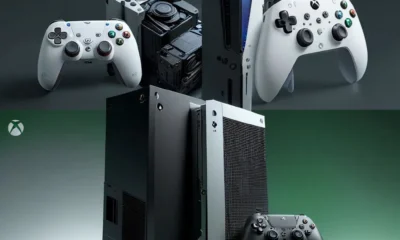
 Features2 weeks ago
Features2 weeks agoBest Cross-Platform Games for PC, PS5, Xbox, and Switch
-

 Game Reviews4 weeks ago
Game Reviews4 weeks agoHow Overcooked! 2 Made Ruining Friendships Fun
-
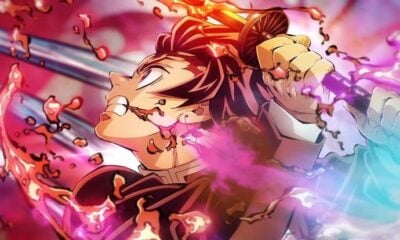
 Features2 weeks ago
Features2 weeks agoThe End Is Near! Demon Slayer’s Final Arc Trailer Hints at a Battle of Legends
-

 Features3 weeks ago
Features3 weeks ago8 Video Games That Gradually Get Harder
-
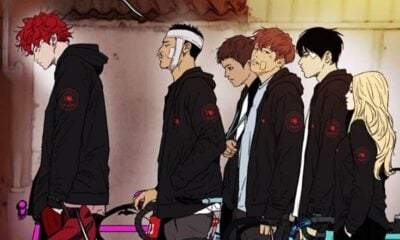
 Features1 day ago
Features1 day agoPopular Webtoon Wind Breaker Accused of Plagiarism, Fans Can’t Believe It!
-
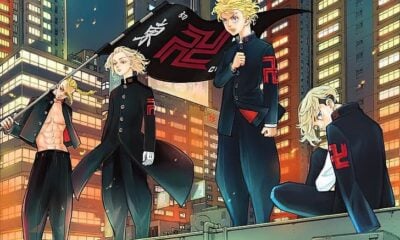
 Features3 weeks ago
Features3 weeks agoDon’t Miss This: Tokyo Revengers’ ‘Three Titans’ Arc Is What Fans Have Waited For!
-
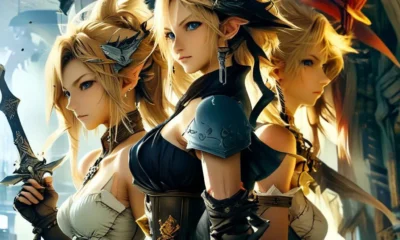
 Game Reviews2 weeks ago
Game Reviews2 weeks agoFinal Fantasy VII Rebirth Review: A Worthy Successor?
-

 Game Reviews4 weeks ago
Game Reviews4 weeks agoHow Persona 5 Royal Critiques the Cult of Success
-

 Guides3 weeks ago
Guides3 weeks agoHow to buy games on Steam without a credit card







